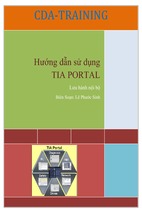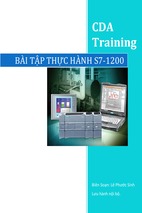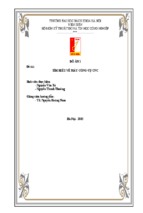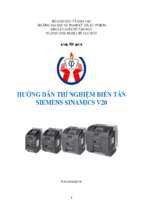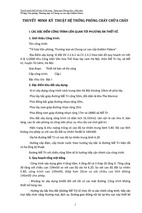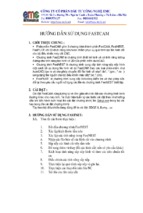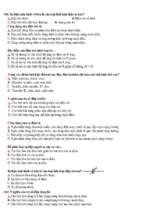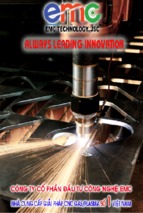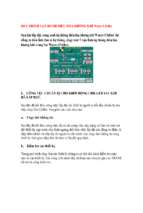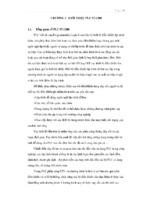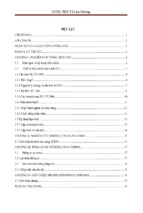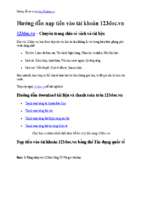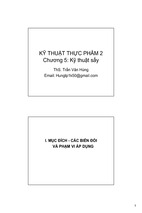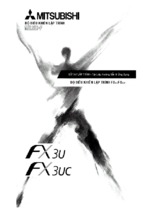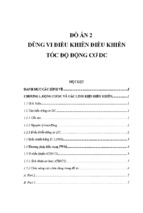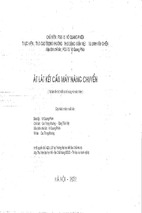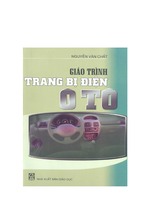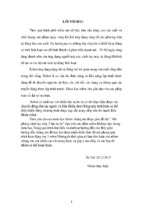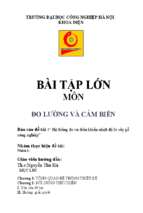Sustainable Manufacturing and Factory
Planning
Value Creation Module and Sustainable Manufacturing
03.04.2017
Technische Universität Berlin
Institute for Machine Tools and Factory Management
Univ.-Prof. Dr.-Ing. Holger Kohl
© IWF TU Berlin
Page 1
Content
Value Creation
Sustainable Manufacturing
Literature and References
Technische Universität Berlin
Institute for Machine Tools and Factory Management
Univ.-Prof. Dr.-Ing. Holger Kohl
Page 2
Content
Value Creation
Sustainable Manufacturing
Literature and References
Technische Universität Berlin
Institute for Machine Tools and Factory Management
Univ.-Prof. Dr.-Ing. Holger Kohl
Page 3
What is Value?
Value takes the form of:
Use value that is subjectively assessed by the customer, based
on their perceptions of the usefulness of the product on offer.
Exchange value is realized when the product is sold. It is the
amount paid by the buyer to the producer for the perceived
use value.
Water has a very high use-value but
may have a very low exchangevalue.
Diamonds have a very high exchangevalue but may satisfy no use-value.
Technische Universität Berlin
Institute for Machine Tools and Factory Management
Univ.-Prof. Dr.-Ing. Holger Kohl
Source: [Bow-00]
Page 4
Who Creates Value?
Individual as a source of value creation: individuals create value by developing novel and
appropriate tasks, services, jobs, products, processes, or other contributions perceived to be
of value by a target user.
Organization as a source of value creation: value is created when firms develop/invent new
ways of doing things using new methods, new technologies, and/or new forms of raw
material.
Society as a source of value creation: at a societal level, the process of value creation can be
conceived in terms of programs and incentives for entrepreneurship and innovation intended
to encourage existing organizations and new entrepreneurial ventures to innovate and
expand their value to society and its members.
Technische Universität Berlin
Institute for Machine Tools and Factory Management
Univ.-Prof. Dr.-Ing. Holger Kohl
Source: [Lep-07]
Page 5
Value Creation Module
Value creation modules consist of the major factors needed to create value, these factors are:
Product
Process
Equipment
Organization
Humans
Modules are to be modelled and valuated on different levels of aggregation e.g. from a single
workplace for component manufacturing to regional value adding in production equipment for
mobility or energy as areas of human living.
Technische Universität Berlin
Institute for Machine Tools and Factory Management
Univ.-Prof. Dr.-Ing. Holger Kohl
Page 6
Factors of the Value Creation Module
Process
Product
► Manufacturing
► Material
► Assembly
► Design
► Transport
► Geometry
► Inspection
► Structure
► …
► Quality
► …
Organization
Equipment
► Quantity/Lot size
► Dates
► Location
► …
► Machine tools
Human
► Qualification/Training
► Motivation
► Health
► Robots
► Transport systems
► Information systems
► …
► …
Technische Universität Berlin
Institute for Machine Tools and Factory Management
Univ.-Prof. Dr.-Ing. Holger Kohl
Page 7
Product – Definition
DIN EN ISO 9000:2005
A product is the result of a process.
A process is a set of interrelated or interacting activities which transforms inputs into outputs.
Four generic product categories:
Services (e.g. transport)
Software (e.g. engine control software, dictionary)
Hardware (e.g. engine mechanical part, tire)
Processed materials (e.g. lubricant, fuel, cooling liquid)
Other definitions
In marketing, a product is anything that can be offered to a market that might satisfy a want or need.
In manufacturing, products are bought as raw materials and sold as finished goods. Commodities are
usually raw materials such as metals and agricultural products, but a commodity can also be anything
widely available in the open market.
In project management, a product is the end result of a project undertaken to produce it.
Technische Universität Berlin
Institute for Machine Tools and Factory Management
Univ.-Prof. Dr.-Ing. Holger Kohl
Source: [DIN-9000], [Kot-06], [Kal-13], [McG-07]
Page 8
Product Types
Products
Tangible products
Non durable goods
Raw material for manufacturing,
process industry, consumable goods,
building material, …
Services (intangible)
Durable (often investment) goods
Investment goods: production
equipment, process equipment,
transport equipment, IT products,
Repairing, maintenance and
installation of products, consulting,
health services, education instruction,
broker business, …
Non-investment goods: household
appliances, textiles, furniture, …
Machine tool
Technische Universität Berlin
Institute for Machine Tools and Factory Management
Univ.-Prof. Dr.-Ing. Holger Kohl
Maintenance
services
www.b-plastic.de
E.g. Coolant
lubricant
Numerically controlled machine tool
Source: [Kot-09]
Page 9
Product – Product Life Cycle
Economic View
Economic product life cycle
Covers the duration of the presence of a product in the market
Product life cycles vary for different product types
Automotive: 7 years
Mobile phones: 6 months
Product
modification
Product
introduction
Product life cycle
new life cycle
Product
elimination
Profit
and
Turnover
Legend:
Turnover:
Product profit:
+
0
Development Introduction
Technische Universität Berlin
Institute for Machine Tools and Factory Management
Univ.-Prof. Dr.-Ing. Holger Kohl
Growth
Maturity
Saturation
Decline
Relaunch
Recycling/
Disposal
Source: [Pahl-07]
Page 10
Product – Product Life Cycle
Technological View
Technological Product Life Cycle
Integrated model that covers all areas of a product‘s existence:
Raw material
production
•Selection of
material
•Make-or-Buy
Product
development
•Generation of
ideas
•Product
development
Production
•Manufacturing
•Assembly
Technische Universität Berlin
Institute for Machine Tools and Factory Management
Univ.-Prof. Dr.-Ing. Holger Kohl
Distribution
Use Phase
•Design
•Usage
•Maintenance
Product
Remanufacturing
End-of-Life Options
Disposal
Material
Recycling
Source: [Sel-00]
Page 11
Factors of the Value Creation Module
Process
Product
► Manufacturing
► Material
► Assembly
► Design
► Transport
► Geometry
► Inspection
► Structure
► …
► Quality
► …
Organization
Equipment
► Quantity/Lot size
► Dates
► Location
► …
► Machine tools
Human
► Qualification/Training
► Motivation
► Health
► Robots
► Transport systems
► Information systems
► …
► …
Technische Universität Berlin
Institute for Machine Tools and Factory Management
Univ.-Prof. Dr.-Ing. Holger Kohl
Page 12
Manufacturing Processes
Manufacturing processes are all operations employed for the creation of geometrically defined
products. Manufacturing processes can be carried out either by hand as well as with the aid of
machine tools or other appropriate equipment.
Manufacturing
Casting
Forming
Cutting
Joining
Coating
Material
properties
altering
Achieve cohesion
Retain cohesion
Degrade
cohesion
Increase
cohesion
Increase
cohesion
Alter material
properties
Welding,
spinning
Magnetron
sputtering,
plasma spraying
Indentation
hardness,
sintering
examples
Die casting,
injection molding
Deep drawing,
press brake
forming
Technische Universität Berlin
Institute for Machine Tools and Factory Management
Univ.-Prof. Dr.-Ing. Holger Kohl
Milling, sawing
Source: [DIN-8580]
Page 13
Manufacturing Process
Primary shaping
Primary shaping is the process in which a solid workpiece is manufactured from an amorphous material
alu-tecwvg
by creation of cohesion
Die casting: Aluminum casting
Sand casting
Forming
Additive manufacturing or 3D printing
Forming is the process of deliberate change of form, surface and material properties of a workpiece
dastuart
keytecnl
under retention of mass and contiguity of the substance
Hydraulic deep-drawing
Technische Universität Berlin
Institute for Machine Tools and Factory Management
Univ.-Prof. Dr.-Ing. Holger Kohl
Roll-threading: altering the thickness of steel slabs
Source: [DIN-8580]
Page 14
Manufacturing Process
Cutting
Cutting is the process in which the shape of a workpiece is changed, with reduction of cohesion in the
htl-bregenz
roemer-maschinenbau
whole body
Joining
Gear machining
Turning a shaft
Joining is the process of durable linking of two or more workpieces of geometrically defined shapes or
Metal hard-soldering
Technische Universität Berlin
Institute for Machine Tools and Factory Management
Univ.-Prof. Dr.-Ing. Holger Kohl
Reis Robotics
walter-automobiltechnik
workpiece of amorphous materials. Cohesion is created locally and increased as a whole.
Resistance welding of a car door
Source: [DIN-8580]
Page 15
Manufacturing Process
Coating
Coating is a process in which surface characteristics are improved with respect to functional and
BMW
Encarta
decorative aspects of a workpiece.
Electroplating
Material properties altering
Coloring: painting a car body
Altering material properties is a process in which a workpiece is entirely or partly subjected to thermal
Technische Universität Berlin
Institute for Machine Tools and Factory Management Roughing metal components
Univ.-Prof. Dr.-Ing. Holger Kohl
TU Darmstadt
Doctor Furnace
cycles, physical and/or chemical changes in order to develop material properties (beneficial for their
further processing)
Sintering components after
pressing
Source: [DIN-8580]
Page 16
Assembly Process
Assembly is the process of putting prefabricated parts and components together in order to
produce a product.
Assembly
Joining*
Handling
Controlling
examples
Soldering,
riveting,
screwing
Adjusting
Special
operations
Tuning,
aligning
Cleaning,
deburring,
imprinting
examples
Gripping,
arranging,
storing
Primary Assembly
Measuring,
testing
Secondary Assembly
* See manufacturing processes
Technische Universität Berlin
Institute for Machine Tools and Factory Management
Univ.-Prof. Dr.-Ing. Holger Kohl
Source: [Spu-86], [DIN-8580, VDI-2860 ]
Page 17
www.gottabemobile.com
www.piotrbiniecki.files.wordpress.com
Assembly Process
Aircraft assembly
www.cardiomyopathy.org
www.mrautocar.wordpress.com
Apple’s iPad and iPhone Foxconn Assembly Lines
Auto assembly
Technische Universität Berlin
Institute for Machine Tools and Factory Management
Univ.-Prof. Dr.-Ing. Holger Kohl
Implantable cardioverter defibrillator (AICD)
Page 18
Factors of the Value Creation Module
Process
Product
► Manufacturing
► Material
► Assembly
► Design
► Transport
► Geometry
► Inspection
► Structure
► …
► Quality
► …
Organization
Equipment
► Quantity/Lot size
► Dates
► Location
► …
► Machine tools
Human
► Qualification/Training
► Motivation
► Health
► Robots
► Transport systems
► Information systems
► …
► …
Technische Universität Berlin
Institute for Machine Tools and Factory Management
Univ.-Prof. Dr.-Ing. Holger Kohl
Page 19
Elements of Production Equipment (VDI 2815)
Production Equipment
Production Equipment
All physical elements directly or
indirectly used by a production
company during its production
activities
Manufacturing
Assembly
Logistic
Quality
Information and communication technology
Superordinate systems
Maintenance and repair
Technische Universität Berlin
Institute for Machine Tools and Factory Management
Univ.-Prof. Dr.-Ing. Holger Kohl
Source: [Wie-05]
Page 20
- Xem thêm -

